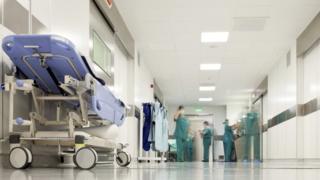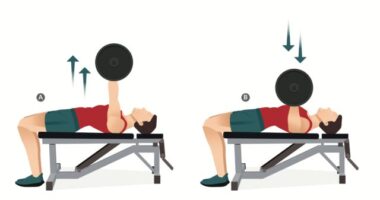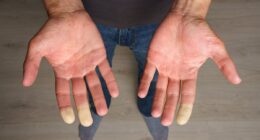 Image copyright Getty Images
Image copyright Getty Images The number of people in hospital with Covid-19 fell in coronavirus hotspots in June and July, according to data released by NHS England.
Cases of coronavirus have been rising nationally since the middle of July, and even earlier in Leicester.
More of these cases are among young people, who are less likely to become seriously sick.
But scientists use hospital data to understand whether rising cases reflect more infections or more testing.
The number of people dying or going into hospital with Covid-19 has been falling across the UK for months, but since the middle of July, the number of confirmed cases has started to rise.
Prof Chris Witty, the UK’s chief medical adviser, has warned that we have “reached the limit of what we can do to open up society” without allowing room for the virus to return.
But some scientists argue that the rise in confirmed cases could reflect more testing rather than more infections.
It may still be too soon for any increase in infections to translate into more people in hospital or dying with Covid-19 nationally.
But hotspots can test the theory since their numbers of cases started to increase earlier.
Leicester saw worsening infection figures throughout the early summer before Health Secretary Matt Hancock announced a local lockdown at the end of the June.
READ RELATED: NHS bosses plan to ease bed crisis by turning patients' bedrooms into wards in new initiative
And Blackburn overtook Leicester as the part of the country with the highest rate of infection in July.
Data released on Thursday by NHS England showed that rising cases were not matched by an increase in the number of people in hospital in the NHS trusts that serve either of these councils.
The number of people admitted to hospital for the first time with Covid-19 did increase in Leicester in June, but the rise was much smaller than the rise in confirmed cases.
In July, Leicester saw 1,336 cases but only seven people were admitted to hospital with Covid-19.
In Blackburn, the number of infections more than doubled in July, but the number of people admitted to hospital fell from 54 in June to 13 in July.
More of the cases now being detected nationally are in people aged 15-44.
They are much less likely to become seriously ill or die with coronavirus.
That could explain some of the UK’s fall in Covid-19 hospitalisations, according to Jason Oke, a researcher at the Centre for Evidence Based Medicine at Oxford University.
But “there are not yet any signs of a second wave in the hospital data”, he says.
Source: BBC News – Health









